This article was co-authored by Rajesh Khanna, MD. Dr. Rajesh Khanna is a board certified Ophthalmologist and the Founder of Khanna Vision Institute in Los Angeles, California. Dr. Khanna specializes in Lasik, cataract, and refractive eye surgery as well as treatments for presbyopia and keratoconus. Dr. Khanna completed his first Ophthalmology Residency in Mumbai and his second Ophthalmology Residency at SUNY Downstate in New York City. He went on to complete a fellowship training in corneal and refractive surgery from the University of Cincinnati in Ohio and a Neurophthalmology fellowship from Kingsbrook Jewish Hospital in New York City. Dr. Khanna is also a voluntary member of the UCLA faculty and is an Internationally recognized top Lasik, presbyopic implants in the eye (PIE), and Refractive vision care specialist. He is board certified by the American Board of Ophthalmology and is a certified Master of Surgery by the University of Bombay.
There are 19 references cited in this article, which can be found at the bottom of the page.
This article has been viewed 34,040 times.
Myopia, or nearsightedness, is a common vision problem that occurs when the eyes have trouble focusing on distant objects. While there’s no true cure, there are a variety of ways to correct nearsightedness. Wearing prescription eyeglasses is the simplest and most common method. Other options include contact lenses and laser eye surgery. Additionally, from eating healthy to resting your eyes, there are easy steps you can take to help slow the progression of myopia.
Steps
Getting Prescription Glasses
-
1Schedule an appointment with an optometrist. Get your eyes checked if you have trouble seeing distant objects or experience any other issues with your vision. Ask friends, relatives, or your primary doctor for a referral, or check your insurer’s directory for an eye specialist in your network.[1]
- The doctor will test your distance vision and depth perception and check your eyes with special instruments. They'll also use eye drops to dilate your pupils so they can examine your eyes. For a few hours after the eye exam, you might be a little more sensitive to light.
- An optometrist conducts the eye exam and writes the prescription for corrective lenses. An optician, either at the doctor's office or at an optical store, helps you select your lenses and fills your prescription.
-
2Get a hard copy of your lens prescription from your doctor. After examining your eyes, your doctor will give you a prescription that lists the exact type of lenses you need. They’re required to give you a printed copy of the prescription, and you do not have to purchase glasses from them.[2]
- Doctors aren’t allowed to charge extra fees for the prescription or otherwise require patients to purchase lenses through their office. If you’re on a budget, shopping for deals elsewhere is often a lot more affordable than buying from a doctor’s office.
Advertisement -
3Buy glasses from your doctor if you have insurance. If you have vision coverage, the easiest option is to purchase glasses through your eye doctor. You’ll receive a lot more personal attention, and you won’t have to do as much research on your own.[3]
- If you don’t have insurance, you should still check prices at your doctor’s office. Glasses are typically more affordable at optical chains and major retailers. However, you might find that your doctor offers competitive prices.
-
4Shop for deals online and at major retailers if you’re on a budget. Try on frames at your doctor’s office or walk-in optical stores, and note the brands and model numbers of your top choices. Then search online to compare prices offered by online retailers, optical chains, and major merchandisers.[4]
- Use caution when buying glasses online, and avoid buying frames without first checking the fit and style in person. Be sure to type your prescription specifications into order forms carefully, and make sure there’s a return policy in case you have any issues.[5]
Tip: If you need help paying for eye care, find financial aid resources at https://www.nei.nih.gov/learn-about-eye-health/healthy-vision/get-help-paying-eye-care.
-
5Wear your glasses according to your doctor’s instructions. Ask your doctor how often you’ll need wear your glasses. Depending on how poor your distance vision is, you may only need to wear glasses for certain activities, such as driving. Alternatively, you might need to wear your glasses at all times.[6]
- Your doctor may advise against wearing your glasses while reading or working on a computer. Depending on your lenses, looking at close objects while wearing glasses for nearsightedness could be bad for your eyes.
- When you’re not wearing your glasses, keep them in a hard case to prevent them from getting damaged.
Correcting Myopia with Contact Lenses
-
1Schedule a fitting with your optometrist if you want contacts. Ask your doctor if contact lenses would be a good solution for your particular condition. You may need to attend multiple appointments to have your eyes fitted for contact lenses. Once your fitting is complete, your doctor will give you a prescription that specifies the exact lenses you need.[7]
- At the fitting, the doctor will use an instrument called a keratometer to measure the curves of your eyes. They'll also measure the sizes of your pupils and irises, or the colored parts of your eyes. The fitting is completely painless, so there's no need to be nervous!
- Be sure your doctor gives you a hard copy of the prescription. Remember that they can’t charge an extra fee for the prescription or force you to purchase lenses through their office.
-
2Compare prices to save money on contact lenses. Like shopping for glasses, the doctor’s office is the easiest option if you have insurance. If contact lenses aren’t covered and your budget is limited, compare prices at big box stores, optical chains, and online retailers.[8]
- When shopping for contacts online, be sure to enter your prescription specifications carefully.[9]
-
3Go with soft contact lenses for the most affordable option. Daily wear soft contacts are the most popular and least expensive option. They need to be taken out and cleaned every night, and shouldn’t be worn while you sleep.[10]
- You can also find extended wear soft contacts, which can be worn for a week or more.[11]
-
4Choose hard, permeable contacts if you have issues with dry eyes. If you’ve tried soft lenses and experience dry eyes, hard contacts are a more breathable option. They’re more expensive but, with proper care, they can last 2 to 3 years.[12]
- Hard contacts aren’t the best option if your prescription changes frequently.
- It might take some time to get used to wearing hard contacts.
-
5Wash your hands and check for grit before putting in your contacts. Wash up for at least 20 seconds with soap and hot water. Then tip your right contact onto your cupped palm, and look for any grit or rips. Put it on your finger with the concave, or cupped, side facing up, hold your eyelids open, look up, and place the lens on the white of your eye.[13]
- Look down and blink to put the lens in place, then repeat the steps on your other eye. It’s wise to always start with the same eye so you don’t forget which lens goes in which eye.
- If you see any grit, rinse the lens with your contact cleaning solution. Don’t use a contact if you see any rips or other signs of damage.
-
6Practice healthy hygiene to prevent eye infections. Even if you use extended wear contacts, it’s best to take them out when you sleep, shower, or go swimming. Never clean your contacts or contacts case with water or saliva; always use cleaning solution labeled for contact lenses.[14]
Warning: Proper care and healthy hygiene are essential. Failure to wear, clean, and store contact lenses properly can lead to serious eye infections.
Undergoing Laser Eye Surgery
-
1Ask your doctor if you’re a candidate for laser eye surgery. To decide whether laser surgery is right for you, discuss the risks and benefit with your doctor. Ask if your eyes are healthy enough for surgery and make sure your lens prescription is stable, or hasn’t changed for at least 2 consecutive years.[15]
- You typically have to be at least 18 to have this surgery, because your refraction needs to be stable—which won't happen if you're still growing.[16]
- There are several types of laser surgery, and your doctor will explain which method is right for you.
- Before undergoing laser eye surgery, your doctor needs to explain the potential risks and side effects, which include infection, scarring, permanent vision changes, dry eyes, and sensitivity to glare or light. You’ll need to sign a form verifying that you understand the risks of surgery.[17]
-
2Follow your doctor’s preoperative instructions. If you wear contact lenses, you’ll need to switch to glasses for 2 to 4 weeks before your initial exam and again before you undergo the procedure. Additionally, don’t apply makeup, lotions, creams, or perfumes near your eyes at least 24 hours before surgery.[18]
- Follow any other instructions provided by your doctor.
-
3Go to the laser surgeon's office to undergo the procedure. Wear comfortable clothes to your appointment, and stay hydrated beforehand to make sure your circulation is stable. Laser eye surgery only takes about 10 to 15 minutes. Your eyes will be numbed during the procedure, but you may feel pain, itching, or burning during the first 6 hours after surgery.[19]
- Laser surgery is an in-office procedure. You'll probably only spend about an hour and a half at the office.
Tip: Before the procedure, ask someone to drive you home and help you get settled. After the procedure, your vision will be blurry, and you’ll need to keep your eyes closed as much as possible.
-
4Wear an eye shield and avoid rubbing your eyes after surgery. Your eyes will heal quickly, but it’s wise to take a few days off from work to rest. Keep your eye shield in place for at least 24 hours after surgery. Continue to wear a patch or shield while you sleep for 4 weeks, or as long as your doctor recommends.[20]
- Most likely, you’ll have a follow-up exam the day after the procedure. At this appointment, the doctor will remove your eye shield and make sure you’re healing properly.
-
5Use antibiotic and anti-inflammatory medications as directed. Your doctor will give you medicated eye drops to prevent an infection, relieve pain, and manage swelling. To apply eye drops, wash your hands, tilt your head back, and gently pull down your lower eyelid. Look up, squeeze 1 drop of fluid into the pocket of your lower eyelid, then keep your eye closed for 30 seconds.[21]
- Hold your eyelids open carefully, don't rub your eyes, and take care not to touch the tip of the dropper to your eyes. Follow your doctor's specific instructions about properly using your medication.
- Your doctor may also prescribe an oral pain reliever or advise you to take an over-the-counter medication to manage pain. Take any medication according to your doctor’s instructions.
-
6Avoid contact sports, swimming, and wearing makeup for 2 to 4 weeks. Try to stick to light activities for 3 days after the procedure. For 2 weeks after surgery, don’t wear eye makeup or apply lotions or creams near your eyes. Steer clear of strenuous activities and contact sports for 4 weeks, and avoid swimming for 8 weeks.[22]
- Additionally, avoid hot tubs and whirlpools for 8 weeks after the procedure.
Slowing the Onset of Myopia
-
1Eat plenty of fruits, veggies, and fish. Eat at least 2 1/2 to 3 cups (about 375 to 450 g) of veggies and 2 cups (about 300 g) of fruit per day. Each week, try to eat at least 2 cups (about 300 g) of leafy greens, such as kale and spinach. Fatty fish, such as salmon and trout, are also great for the eyes, so try to eat at least 2 to 3 servings per week.
- Specific fruits and veggies that promote eye health include sweet potatoes, carrots, broccoli, strawberries, citrus fruits (such as oranges and grapefruit), and berries.[23]
-
2Spend more time outdoors, especially if you’re a child or young adult. Try going for daily walks and taking up activities such as hiking or cycling. Children, teens, and young adults who spend more time outside have a lower risk of becoming nearsighted. When you're indoors, you're more likely to look at things close-up, but outdoors, you often have to look at things that are far away.[24]
- While there’s strong evidence that being outside helps prevent nearsightedness, bear in mind there’s less proof that it slows progression once myopia develops.
Tip: Wear sunglasses when you’re outside to protect your eyes from the sun.[25]
-
3Rest your eyes every 20 minutes when you’re working. Reading and looking at screens can strain your eyes and increase the risk of developing myopia. Follow the 20-20-20 rule: At least once every 20 minutes, look away from whatever you’re reading or writing. Focus your eyes on something at least 20 feet (6.1 m) away for 20 seconds.[26]
- Blink a few times as you do this.[27]
-
4Ask your doctor about atropine if you have rapidly progressing myopia. Low-dose atropine eye drops may be helpful for rapidly progressing cases, especially in children. Since it causes sensitivity to light, it’s best to limit your exposure to direct sunlight and wear polarized sunglasses when you go outside.[28]
- Atropine is the medication used to dilate pupils during an eye exam. Keep in mind it isn’t routinely used to manage myopia, and is currently only recommended in special cases.
Expert Q&A
Did you know you can get expert answers for this article?
Unlock expert answers by supporting wikiHow
-
QuestionHow old do I have to be to get myopia surgery?
 Rajesh Khanna, MDDr. Rajesh Khanna is a board certified Ophthalmologist and the Founder of Khanna Vision Institute in Los Angeles, California. Dr. Khanna specializes in Lasik, cataract, and refractive eye surgery as well as treatments for presbyopia and keratoconus. Dr. Khanna completed his first Ophthalmology Residency in Mumbai and his second Ophthalmology Residency at SUNY Downstate in New York City. He went on to complete a fellowship training in corneal and refractive surgery from the University of Cincinnati in Ohio and a Neurophthalmology fellowship from Kingsbrook Jewish Hospital in New York City. Dr. Khanna is also a voluntary member of the UCLA faculty and is an Internationally recognized top Lasik, presbyopic implants in the eye (PIE), and Refractive vision care specialist. He is board certified by the American Board of Ophthalmology and is a certified Master of Surgery by the University of Bombay.
Rajesh Khanna, MDDr. Rajesh Khanna is a board certified Ophthalmologist and the Founder of Khanna Vision Institute in Los Angeles, California. Dr. Khanna specializes in Lasik, cataract, and refractive eye surgery as well as treatments for presbyopia and keratoconus. Dr. Khanna completed his first Ophthalmology Residency in Mumbai and his second Ophthalmology Residency at SUNY Downstate in New York City. He went on to complete a fellowship training in corneal and refractive surgery from the University of Cincinnati in Ohio and a Neurophthalmology fellowship from Kingsbrook Jewish Hospital in New York City. Dr. Khanna is also a voluntary member of the UCLA faculty and is an Internationally recognized top Lasik, presbyopic implants in the eye (PIE), and Refractive vision care specialist. He is board certified by the American Board of Ophthalmology and is a certified Master of Surgery by the University of Bombay.
Board Certified Ophthalmologist
Warnings
- Laser eye surgery is a common procedure with a high success rate. However, as with any surgery, there are risks and potential complications. Make sure you understand the risks and benefits before undergoing surgery.⧼thumbs_response⧽
References
- ↑ https://www.optometrists.org/general-practice-optometry/guide-to-myopia-management/myopia-management/
- ↑ https://www.optometrists.org/general-practice-optometry/guide-to-myopia-management/myopia-management/
- ↑ https://www.consumerreports.org/cro/eyeglass-stores/buying-guide/index.htm
- ↑ https://www.consumerreports.org/cro/eyeglass-stores/buying-guide/index.htm
- ↑ https://www.consumerreports.org/eyeglasses/buying-glasses-online/
- ↑ https://www.aoa.org/patients-and-public/eye-and-vision-problems/glossary-of-eye-and-vision-conditions/myopia
- ↑ https://www.allaboutvision.com/eyeglasses/right-frames-size/
- ↑ https://www.consumerreports.org/cro/eyeglass-stores/buying-guide/index.htm
- ↑ https://www.consumerreports.org/eyeglasses/buying-glasses-online/
- ↑ https://www.aao.org/eye-health/glasses-contacts/contact-lens-102
- ↑ https://www.aao.org/eye-health/glasses-contacts/contact-lens-102
- ↑ https://www.allaboutvision.com/hard-contact-lenses/
- ↑ https://www.betterhealth.vic.gov.au/health/ConditionsAndTreatments/eyes-contact-lenses
- ↑ https://www.cdc.gov/contactlenses/protect-your-eyes.html
- ↑ https://www.betterhealth.vic.gov.au/health/conditionsandtreatments/eyes-laser-eye-surgery
- ↑ Rajesh Khanna, MD. Board Certified Ophthalmologist. Expert Interview. 11 November 2020.
- ↑ https://www.nhs.uk/conditions/laser-eye-surgery-and-lens-surgery/
- ↑ https://www.fda.gov/medical-devices/lasik/what-should-i-expect-during-and-after-surgery
- ↑ https://www.fda.gov/medical-devices/lasik/what-should-i-expect-during-and-after-surgery
- ↑ https://medlineplus.gov/ency/patientinstructions/000525.htm
- ↑ https://www.betterhealth.vic.gov.au/health/conditionsandtreatments/eyes-laser-eye-surgery
- ↑ https://www.fda.gov/MedicalDevices/ProductsandMedicalProcedures/SurgeryandLifeSupport/LASIK/ucm061270.htm
- ↑ https://www.eatright.org/health/wellness/preventing-illness/5-top-foods-for-eye-health
- ↑ Rajesh Khanna, MD. Board Certified Ophthalmologist. Expert Interview. 11 November 2020.
- ↑ https://www.aao.org/eye-health/tips-prevention/sun
- ↑ https://www.aao.org/eye-health/tips-prevention/computer-usage
- ↑ Rajesh Khanna, MD. Board Certified Ophthalmologist. Expert Interview. 11 November 2020.
- ↑ https://www.ncbi.nlm.nih.gov/pmc/articles/PMC3688263/
About This Article
While its not really possible to completely cure myopia, you can correct your near-sightedness with glasses. To do this, ask your doctor for a referral to an eye specialist, who will check your eyes and write out the prescription you need. Once your prescription is confirmed, purchase the glasses you need through your doctor’s office. If the cost is a problem, look for deals at major retailers or online, but make sure to stick to the prescribed specifications. In addition to wearing your glasses, you can slow down the onset of myopia by eating plenty of fruits, vegetables, and fish, which all help keep your eyes healthy. You should also try resting your eyes every 20 minutes when you’re working, since staring at a screen for long periods of time can strain them. For tips on how to treat myopia with eye surgery, read on!
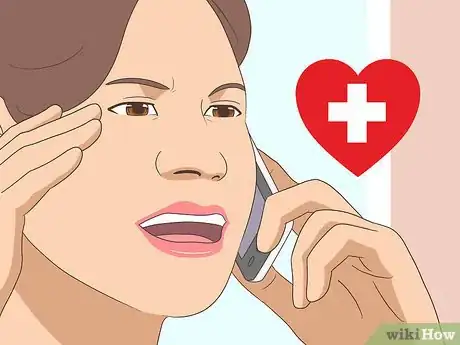

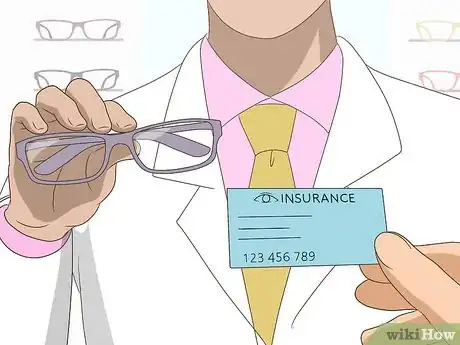
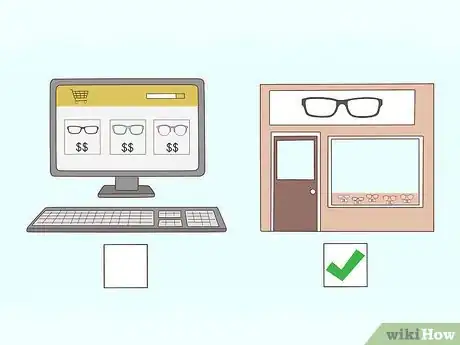

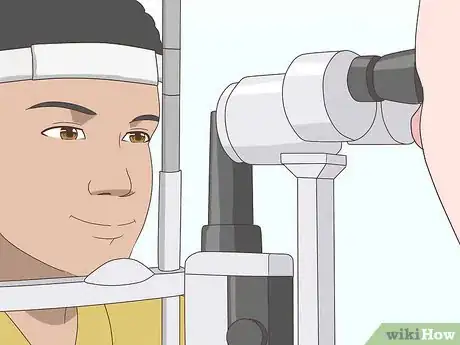
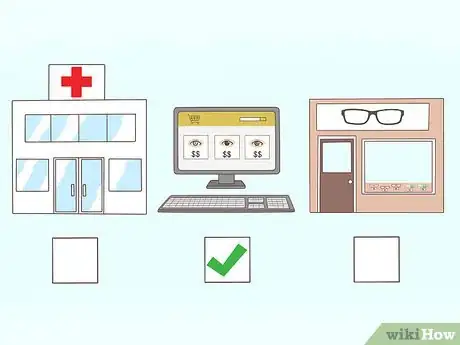
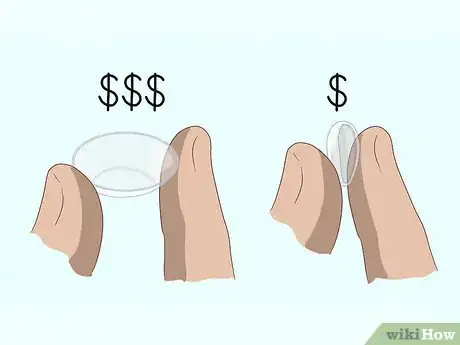
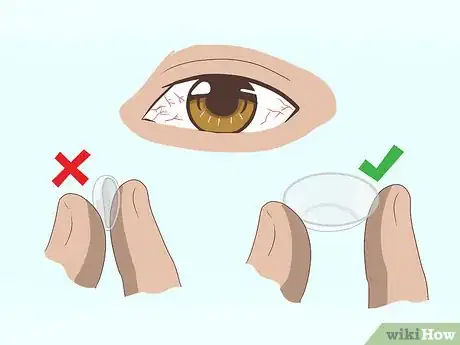

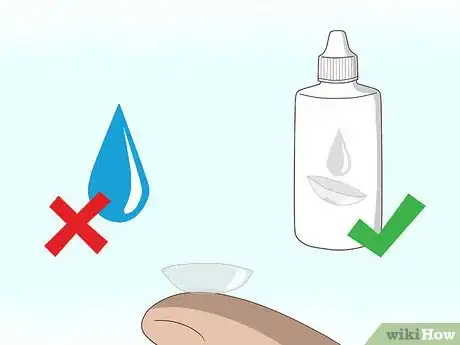
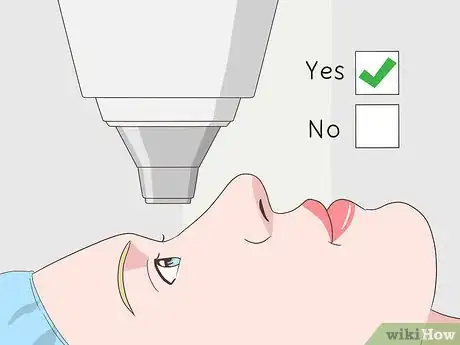

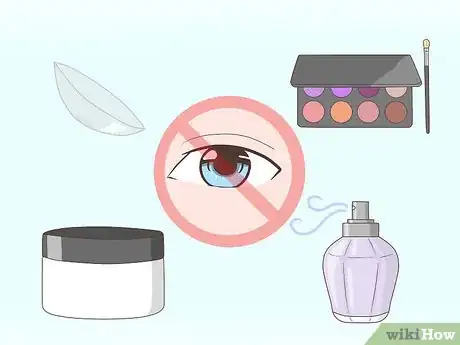
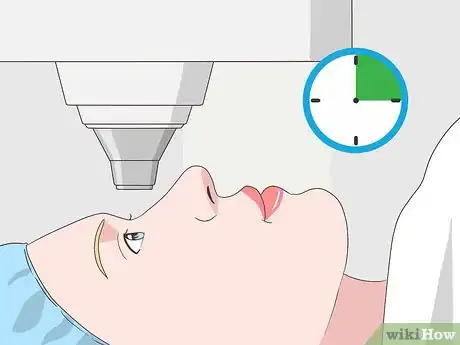
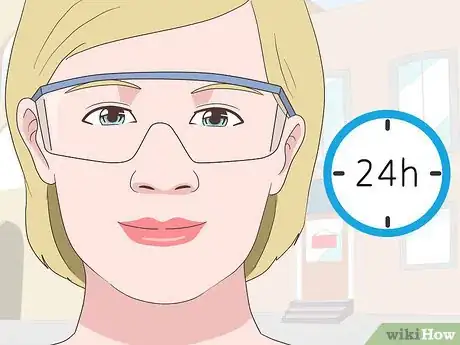
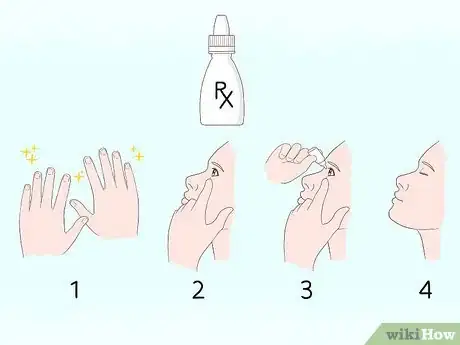
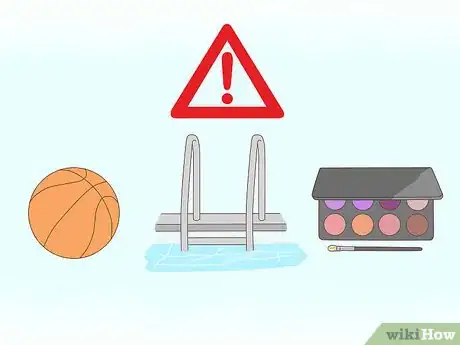
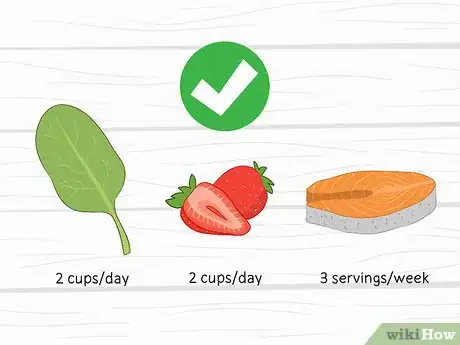


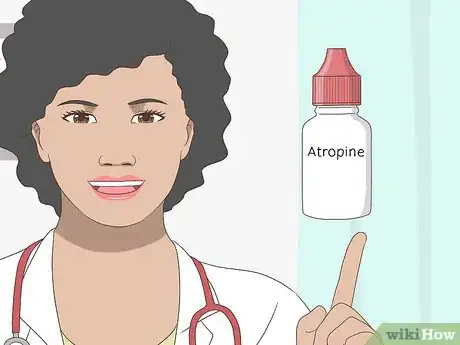
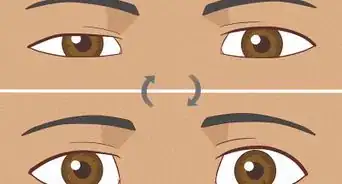
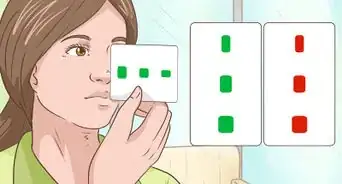
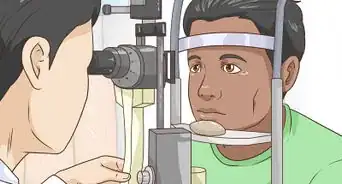






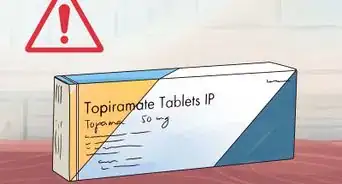



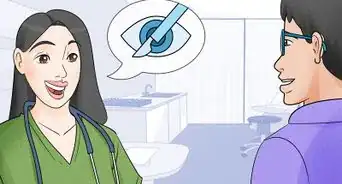






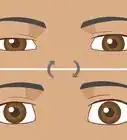

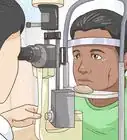




































Medical Disclaimer
The content of this article is not intended to be a substitute for professional medical advice, examination, diagnosis, or treatment. You should always contact your doctor or other qualified healthcare professional before starting, changing, or stopping any kind of health treatment.
Read More...